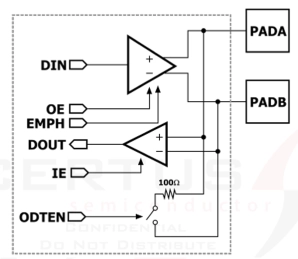transceiver IP
Filter
Compare
960
IP
from
114
vendors
(1
-
10)
-
802.15.4G RF Transceiver
- The RF Transceiver (B130RF15P4G) is a dual band (sub-1GHz and 2.4GHz band) integrated transceiver specially designed for smart metering and IEEE 802.15.4g related applications.
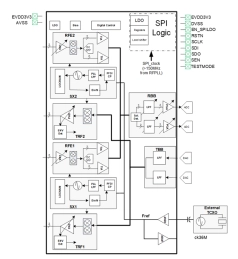
-
Sub-1GHz (699MHz-960MHz) fully integrated transceiver
- The B40NLL_NBIOT_TRX is a sub-1GHz (699MHz-960MHz) fully integrated transceiver specially designed for Narrow-band IOT applications.
- The device is comprised of RF frontend, Frac-N frequency synthesizer, LO chains, and analog baseband blocks.
- The receive path (RX) has high dynamic range and sensitivity.
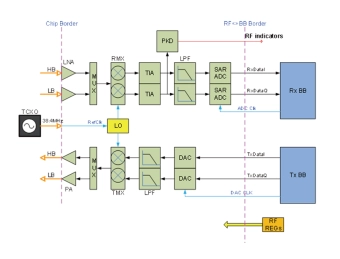
-
0.9V SLVS Transceiver in TSMC 22nm
- This SLVS I/O Library, implemented in TSMC 22nm with an 11P7M_5X1Z UT-AlRDL metal stack, provides a 0.9V differential transceiver optimized for low-power, high-speed operation.
- Supporting data rates up to 200 Mbps and compliant with JESD8-13 SLVS standards, the library features strong power supply rejection, integrated 100 on-die termination, and robust 2 kV HBM / 500 V CDM ESD protection.
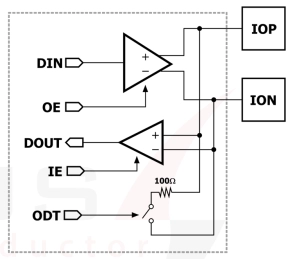
-
1.2V SLVS Transceiver in UMC 110nm
- This library delivers a compact and reliable 1.2V SLVS transceiver solution in UMC 110nm, optimized for high-speed, low-power applications.
- Featuring robust supply and ground noise rejection, 2kV HBM ESD protection, and integrated on die termination, this library provides both transmit and receive paths compliant with JESD8-13 SLVS standards at up to 200 Mbps.
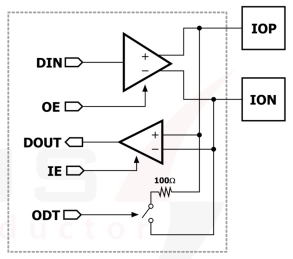
-
High Performance Transceiver
- Our FD-TRx Series is a transceiver comprising both of our breakthrough flagship FDDAC and FDADC technologies in a single chip offering a full solution for bi-directional connectivity.
- Its ultra-wide coherent modulation bandwidth and low energy consumption make it ideally suited for wide bandwidth applications such as mmWave-WiFi, mmWave5G and 6G, radar, or satellite.
-
Wi-Fi 7(be) RF Transceiver IP in TSMC 22nm
- The Wi-Fi 7 (802.11be) RF transceiver IP, operating in 2.4GHz / 5GHz / 6GHz bands, is tailored for next-generation high-performance applications.
- This tri-band system delivers exceptional wireless communication capabilities with support for Wi-Fi 6/6E/n/g/b/a, enabling seamless connectivity across a wide frequency spectrum (5.925–7.125 GHz).
- With support for advanced 4096-QAM modulation, the IP is capable of ultra-high data throughput, making it an ideal solution for bandwidth-intensive applications requiring low latency, fast data rates, and robust connectivity.
-
MIPI M-PHY® 3.1 Analog Transceiver
- The M-PHYs are of Type 1, which apply to UFS, LLI and CSI-3 protocols.
- The Multi-gear M-PHY 3.0 consists of analog transceivers, high speed PLL, data recovery units as well as the state-machine control — all in a single GDSII.
- The interface to the link protocol-specific controller (host or device) is compliant to the M-PHY RMMI specification, which allows seamless integration of the two IPs, namely the controller and the PHY, into the chip design.
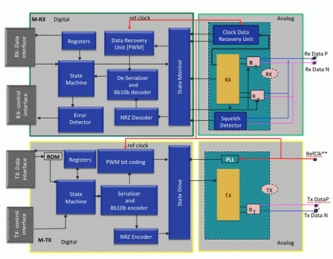
-
MIPI D-PHY Analog Transceiver IP Core
- The MIPI D-PHY Analog Transceiver IP Core is fully compliant with the D-PHY specification version 1.1.
- It supports the MIPI® Camera Serial Interface (CSI-2) and Display Serial Interface (DSI) protocols at speeds up to 1.5Gbps per lane.
- It is a Universal PHY that can be configured as a transmitter, receiver, or transceiver.
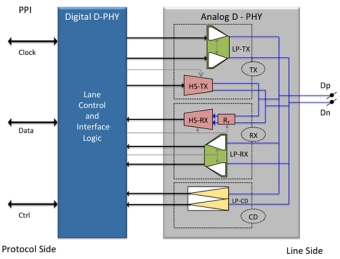
-
MIPI M-PHY® 4.1 Analog Transceiver
- The M-PHY is of Type 1, which apply to UFS, LLI, and CSI-3 protocols. The Multi-gear M-PHY 4.1 consists of analog transceivers, high-speed PLL, data recovery units as well as state-machine control — all in a single GDSII.
- The interface to the link protocol-specific controller (host or device) is compliant with the M-PHY RMMI specification, which allows seamless integration of the two IPs, namely the controller and the PHY, into the chip design.
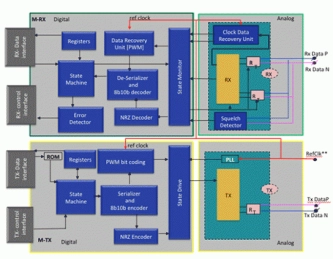
-
LVDS Transceiver in TSMC 28nm
- This 1.8V LVDS transceiver, designed for TSMCs 28nm process, delivers high-speed, low-power differential signaling with superior signal integrity.
- Engineered with 1.8V thick oxide devices and a 0.8V standard core interface, it operates ef- ficiently across a wide temperature range (-40°C to 125°C).
